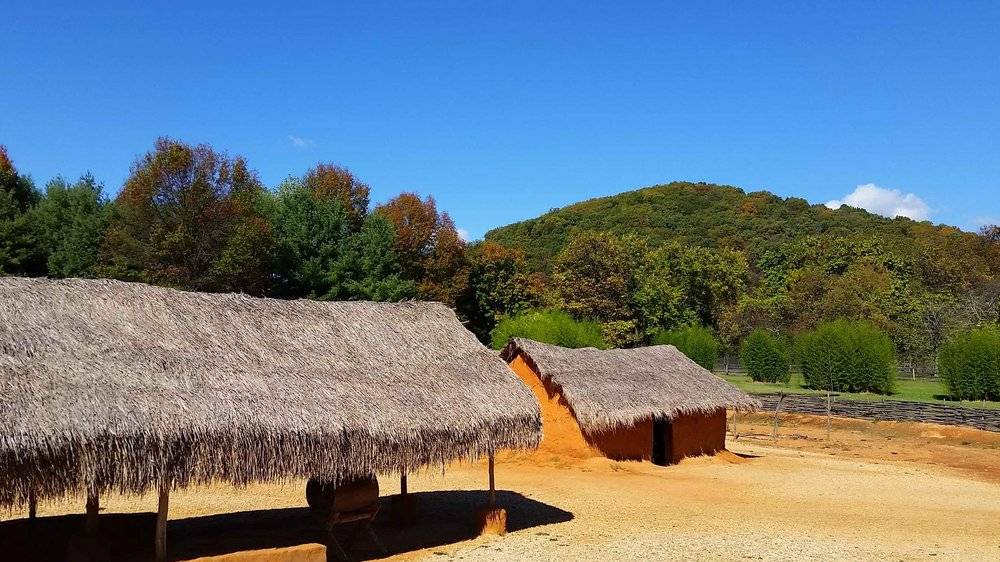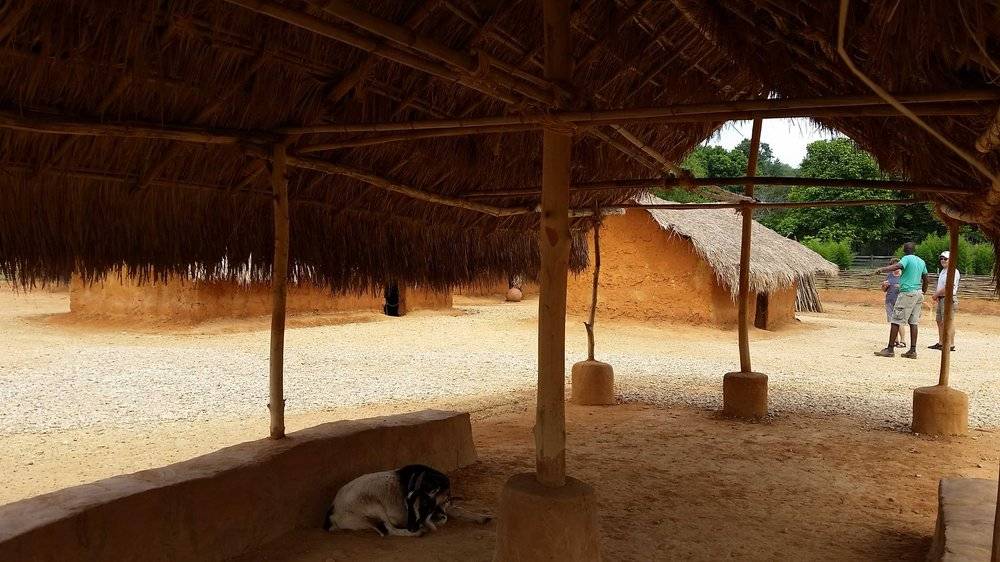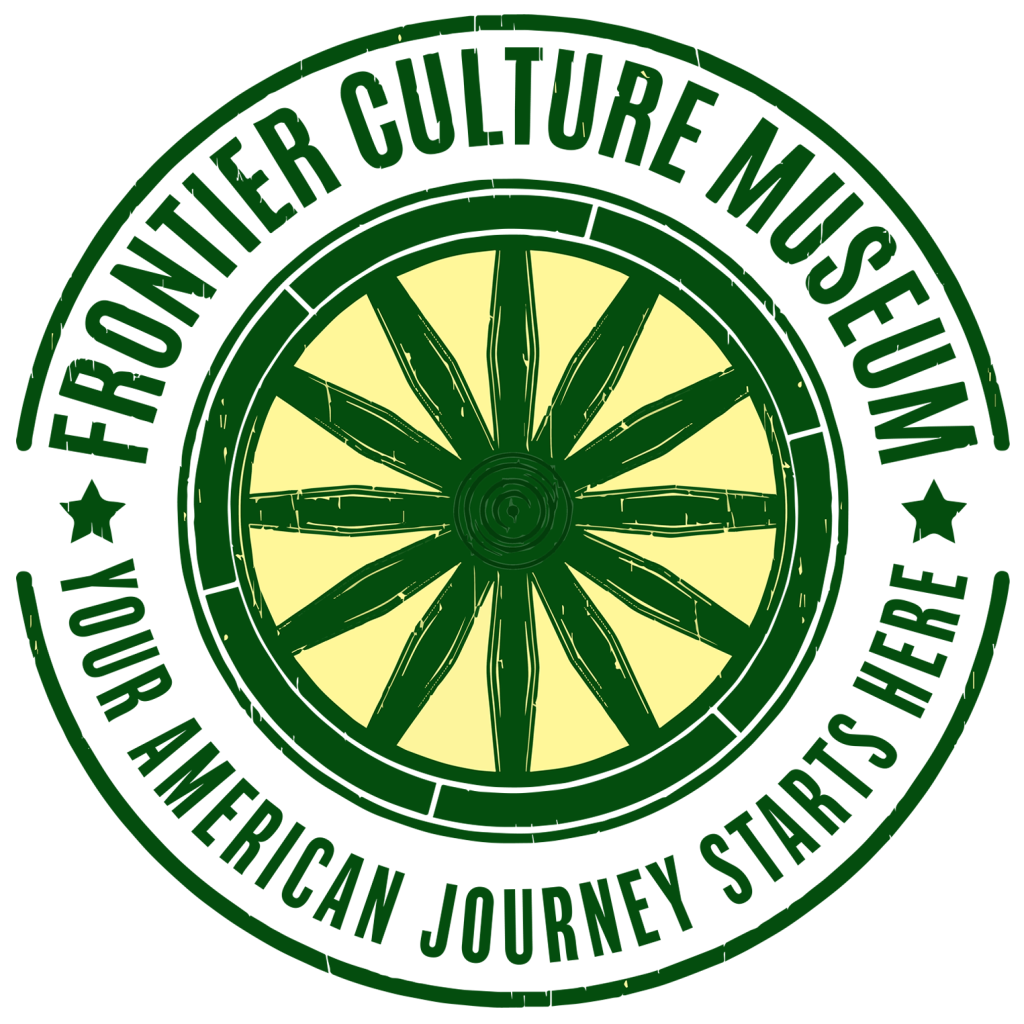Lecture Series
West Africa, 1700s

Due to needed repairs and exciting expansions for the museum, we are upgrading our current West African exhibit. Temporary structures will be available for programs until our new exhibit is fully completed. Thank you for your patience while this exhibit is under construction.
The people represented on the West African Farm are Igbo, and the buildings at this exhibit are reproductions of those found in 18th-century Igboland, a region located in modern-day Nigeria. West African peoples were linked by an extensive trade network which covered large areas of the continent. Trading brought them goods and information from other parts of Africa and beyond. West African societies were structured around trade and manufacturing, agricultural production, family kinship and ancestor worship.
The arrival of Europeans on Africa’s Atlantic coast in the 1400s brought great change to them and their neighbors. Initially, Europeans sought gold, spices and other commodities in West Africa. The discovery of America and the avarice of European colonists for New-World resources gave rise to the slave trade. Over the course of five centuries, more than ten million Africans were taken from their homelands and forced to another continent.
The great majority of Africans captured were members of diverse West African cultures that lived in the hinterlands of the Atlantic coast. Beginning in the early 1700s, Virginia tobacco planters imported increasing numbers of captive Africans to work their plantations. Africans lived in all of Britain’s North American colonies, though their population was highest in South Carolina and Virginia.
The 1700s were a peak period in the transatlantic slave trade. At its height, the slave trade reached deep into the hinterlands of West Africa, and involved Africans as both traders and captives. Their population was large, and their long history of living in independent villages left them vulnerable to the raids and kidnappings that fed the transatlantic trade.
The Igbo homeland was covered by a web of overland trails and rivers that linked marketplaces and collection points throughout the hinterland of the Bight of Biafra to the coastal ports of Bonny, and Old and New Calabar. Over one million captives were shipped from these ports during the period of the slave trade. Approximately 30,000 Igbo were shipped to Virginia between 1716 and 1755.
Race-based slavery soon became a central feature of life in Virginia, and Black people were denied the freedom and opportunities which brought white immigrants to the colonies in the first place. Unfree, African labor contributed to the growth and success of the local economy and the wealth and status of enslavers. As settlement expanded westward, enslaved Africans and African Americans in the backcountry participate in the cultural exchange on the frontier.
West African site. Covered Pavilion with house in the back ground. Both are made from red clay mud.

Contributions to American culture are found in foodways, music, folklore, and religious worship. Okra and black-eyed peas are among the most common items in the American food supply introduced by Africans. The banjo and American musical forms such as Blues and Jazz grew from models introduced by enslaved Africans.
American folklore shows African influences, especially in stories involving animals speaking and behaving like humans. And the enthusiasm and spirit of Christian worship among a number of Protestant denominations in America is believed to have originated in early African and African American worship practices. When permitted, Africans influenced the form and function of the pottery, basketry, wood-work and textiles they produced for others.
Want to learn more? Check our the Virtual Tour of our West African Exhibit below!
